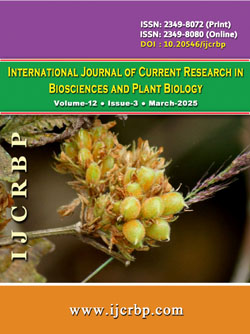 |
Online ISSN : 2349-8080 Issues : 12 per year Publisher : Excellent Publishers Email : editorinchiefijcrbp@gmail.com |
Cymbopogon citratus (lemongrass) and C. nardus (citronella grass) are perennial aromatic herbs belonging to the plant family Poaceae. They are prevalent in the semi-temperate and tropical regions of Asia, America and Africa. A strong lemon fragrance, a predominant feature of these grasses, is due to the high citral, linalool and limonene contents in their oil. The redolence of the oil enables its use in soaps, detergents and perfumes. Moreover, lemongrass is predominately used as food. These grasses also find an application in the pharmaceutical industry. A vast array of ethnopharmacological applications of lemongrass and citronella grass exists today. Apart from nutrients such as fats, proteins, fibers and minerals, they also contain various bioactive compounds which may be grouped into alkaloids, terpenoids, flavonoids, phenols, saponins and tannins. The health restorative capacity of them may be ascribed to the diverse secondary metabolites they produce. Despite their importance for centuries in the daily life of people in Benin, little research has been addressed on the agronomical requirements of the crops, particularly those studies on the fertilizer applications tending to the preservation of the environmental balances. Therefore, we have studied in a preliminary survey the effects of diverse fertilizer applications on the crop productivity and phytochemical composition of their essential oil. Early or delayed harvesting of lemongrass and citronella grass affects essential oil and citral content. The objectives of the study were to determine the effects of biological or chemical fertilizer applications and two maturity stages at harvest of lemongrass and citronella grass on dry matter biomass production, essential oil, chemical composition, citral, linalool, citronellol and limonene contents. The crop clones were planted using a randomized complete block design with four replications at two locations (Centre Songhai in Porto-Novo, and Allada, Benin) during two growing years. Shoots and leaves were harvested at 4.5 and 6.5 months after planting. After harvest, the essential oil and chemical composition were studied using the gas chromatography-mass spectrometry (GC-MS) analysis following the hydrodistillation. ANOVA, Kruskal-Wallis non-parametric test and Ward’s minimum variance cluster analysis were used to distinguish the treatment, genotypic and maturity stage effects on the quality traits of concern. There were significant effects of fertilizer type and maturity stages on biomass production, essential oil and chemical composition. Biological fertilizer enhanced biomass production and citral content in essential oil in C. citratus than in C. nardus. Chemical fertilizer improved rather more the biomass yields in C. nardus. Lemongrass and C. nardus harvested at 6.5 months after planting had significantly higher oil, citral, linalool, citronellol and limonene contents than those harvested at 4.5 months. A total of 35 compounds were detected from all the probes analyzed. In all cases, citral, linalool, citronellol and limonene contents were around 40, 1, 1, and 15% respectively, and independently of the control, biological, chemical fertilizer and maturity stages. The results presented here suggest further prospects or research activities on the crops as well as the measures to boost the actual production of these aromatic species in Benin and West Africa.
